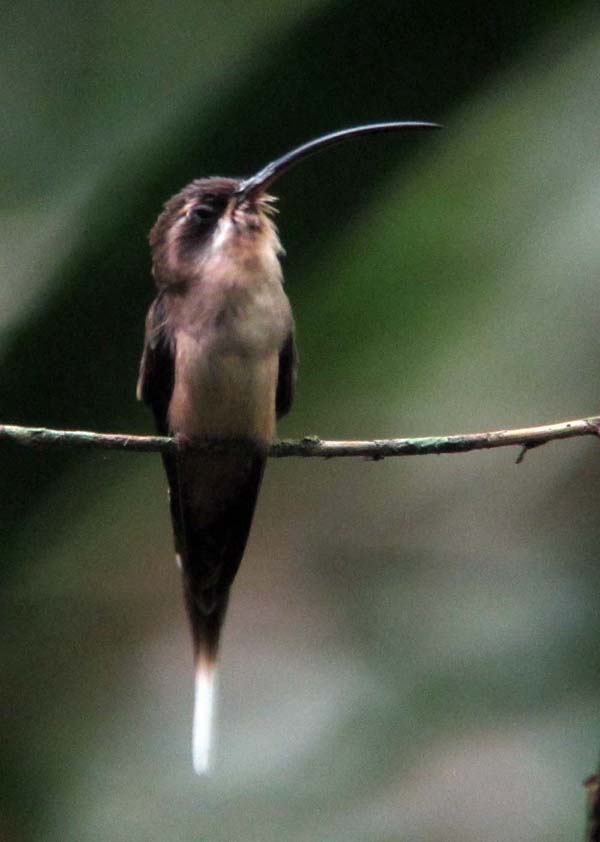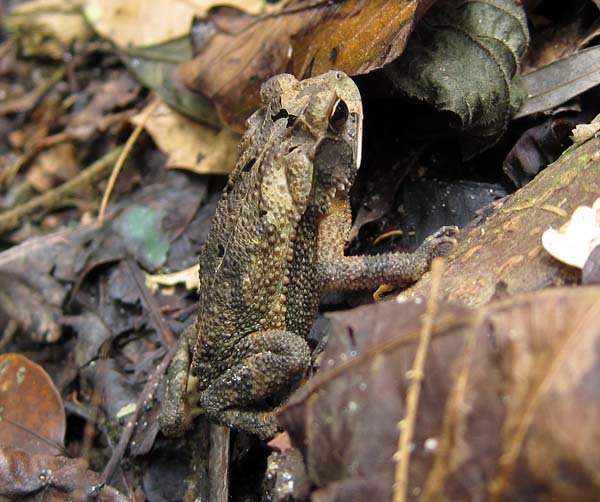Birding the Lacandon Rainforest of Mexico
Here are some photos from our third day of birding in eastern Chiapas, Mexico on the tour I led here in mid-February this year.
We had all morning to bird in the 1463-hectare preserve belonging to the community of Reforma Agraria – their Reserva Ejidal. The trail, steep and narrow in places, continued for 2.5 km.
The birding was fantastic along the whole trail – starting at the trailhead on the main road where we had Black-headed Trogon.
This Rufous Mourner was here as well.
One of the tour highlights was walking through the middle of a very active Long-billed Hermit lek. Unlike a prairie-chicken lek, where all the males perform in one spot, hermits have an “exploded lek,” where they choose a singing perched within earshot of each other. Each is bird defends a tiny singing territory not at all related to any sort of feeding or nesting territory. Its entire purpose is to give females a chance to choose the best mate. The whole forest rang with their squeaky songs here.
This giant Ceiba pentandra tree was the largest on the trail.
We stopped to admire a hive a stingless bees, genus Melipona. Our local guide, Isaías, told us how the honey is highly valued and found in the hive in little fist-sized honey pots apart from the larval chambers.
This is a Gulf Coast Toad, Incilius valliceps. Note that the old genus Bufo has been ruptured into several genera by the taxonomists.
One of our target birds here was this Black-throated Shrike-Tanager – essentially an endemic of the wet tropical rain forests of the Maya region. Very few species are true endemics of this region, being found either well into the drier areas of the Yucatan and Pacific Coasts or into similar wet forests south to Costa Rica and Panama.
On our way back north to our next hotel, we flushed a group of about 75 Black Vultures off a dead cow in a field next to the road. Among them were at least six King Vultures, and I managed this digiscoped image from within the vehicle.
Stay tuned next week for scenes from the famous ruins of Bonampak.

The King Vultures are precious. These birds are completely unlike any we find in the Old World, but I felt an instant kinship with the trogons (we have one species in southern India).